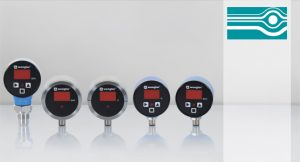 Four sensor options that are just right for your industrial needs
Four sensor options that are just right for your industrial needs
August 20, 2014 REDWIRE is news you can use from leading suppliers. Powered by FRASERS.
Posted by Wenglor Sensoric Canada Inc
Wenglor develops innovative automation technologies, such as sensors, safety and camera systems with the latest communic... Read more
Subscribe
Free REDWIRE e-newsletter

The main components of industrial grade sensors include a sensor, signal processor and transmitter.
Generally, sensors are devices that mimic highly sensitive people: they react to changes within the atmosphere, have a low threshold for noise, lights or smells, with an aptitude to provide a highly detailed-oriented output of results.
Want to continue comparing that sensitive friend of yours to an industrial sensor? While that may not be accurate, the following four sensor options are, which includes top picks of industries that benefit from that corresponding sensor.
Go with the flow with a fluid sensor
Used to measure the rate of flow volume of liquids or gases, a fluid sensor senses the physical properties of substances by gauging flow speed, relative pressure and temperature.
Choose a sensor that provides multi-segmented LED display technology to allow for seamless and accurate measurement results of flow direction and quick detection monitoring.
Top industry picks: chemical and petrochemical
Feel the electricity with inductive sensors
Remember when you set off the metal detector at the airport? Or perhaps you threw caution to the wind by flooring it while driving through a yellow-turned-red light? You can thank inductive sensors for that.
Inductive sensors identify metals (including aluminum, brass or steel) at a distant proximity using electrical currents that produce an electromagnetic field.
Opt for inductive sensors that are housed into one unit without any moving parts to ensure the highest anti-corrosive and shock-absorbing value, which equals low maintenance and high performance value.
Top industry picks: automotive and construction
Count your blessings — and objects — with photoelectronic sensors
Accuracy and flexibility are key advantages to photoelectronic sensors, which gauge the brightness, colour and radiance of lighted objects from a mile (or more) away.
Thanks to the fiber optic cables connected to the sensors while under demanding applications, or in tight tolerances, multiple system installation options are available that allows for unit mounting ease and adaptability.
Top industry pick: automation and food or material handling
Ultrasonic sensors: it’s a good thing they are insensitive and intrusive
Sometimes referred to by its stage name ‘transducer’, an ultrasonic sensor is impervious to external distractions, including dust, extraneous light, mist, smoke, vapour or soundwaves.
Ideal for applications that involve bulk materials and liquids, dark objects, reflective and shiny surfaces and transparent matter, ultrasonic sensors are experts at detecting and measuring objects immaterial of colour, material, texture or transparency.
Top industry pick: automotive and medicine
We have a sixth sense that you need more information: let Wenglor Sensoric Canada help you make sense of the vast automation technologies available today, including sensors, camera and safety systems.
Share
Posted by Wenglor Sensoric Canada Inc
Wenglor develops innovative automation technologies, such as sensors, safety and camera systems with the latest communic... Read more